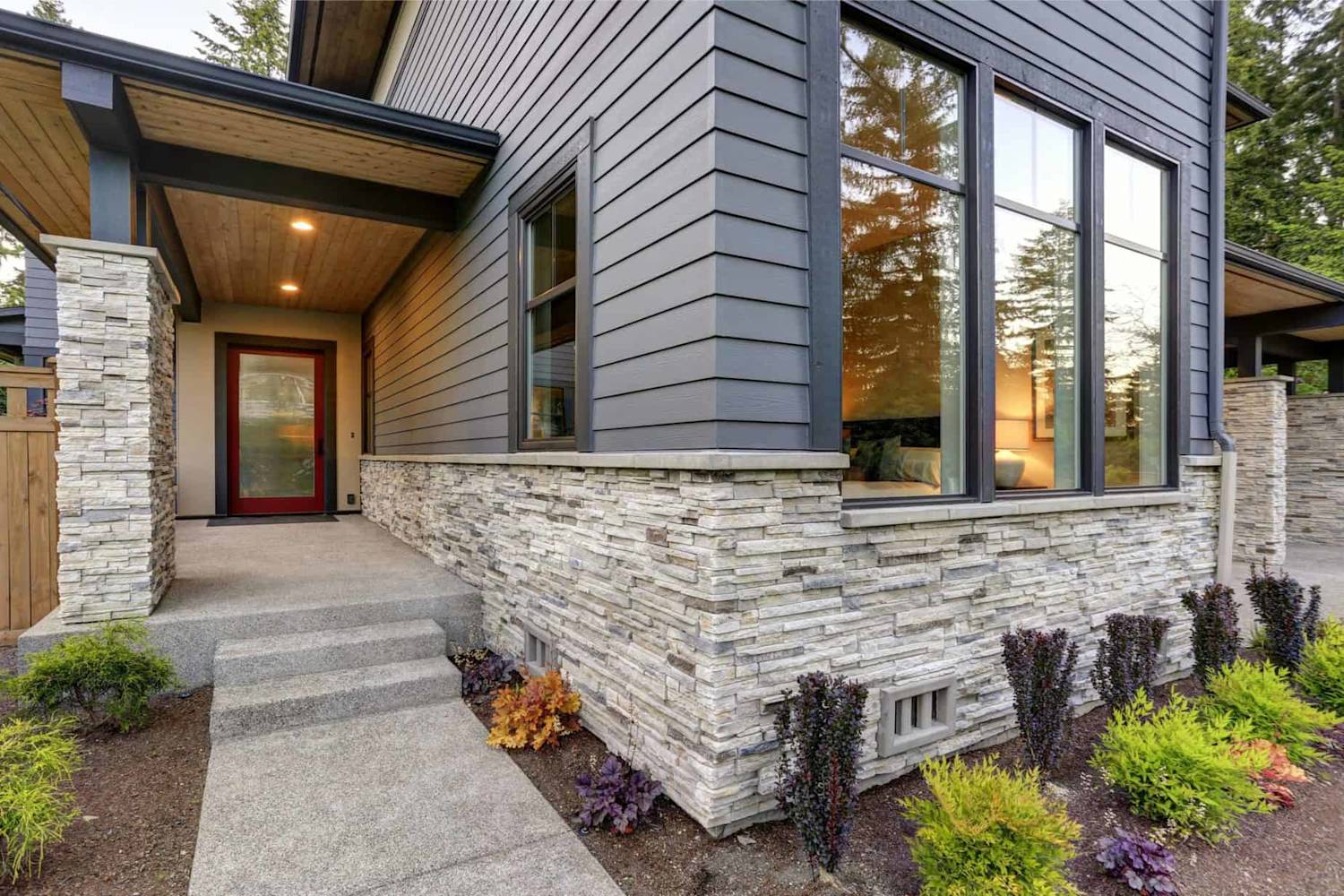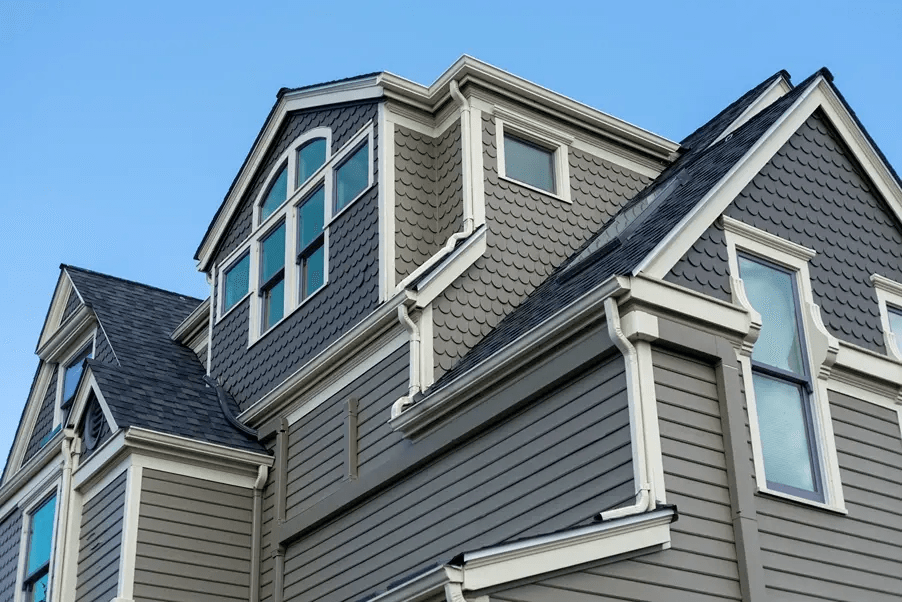Custom exterior siding: Methods to Get Your Home for New Siding Installation
Local siding repair Baltimore: Experienced Exterior Cladding Specialists Can Boost The Durability And Look Of Your Home
Types of Siding Products
When selecting the best siding material, siding specialists typically navigate a maze of options, each with its own personality and charm. Have you ever questioned why some homes seem to use their exterior like a tailored suit, while others look like they've obtained an outfit? The secret depend on the product.
Wood Siding: Traditional with Character
Wood siding has this classic appeal, reminiscent of relaxing cottages and rustic cabins. It breathes warmth and authenticity, however it demands care, similar to a valued book that needs gentle handling. Professionals typically advise property owners: "Wood sings a gorgeous song, but just if you keep it well-tuned."
- Types: Cedar, Pine, Redwood
- Pros: Natural insulation, aesthetic flexibility
- Cons: Vulnerable to moisture, requires routine maintenance
Vinyl Siding: The Popular Workhorse
Ask any siding specialist about vinyl, and you'll find out about its strength and ease. It resembles the trustworthy friend who's constantly all set to help, rain or shine. Vinyl doesn't require much attention, yet it uses a large palette of colors and designs. But is benefit worth the sacrifice of that genuine texture?
- Durability: Resists fading, splitting, and pests
- Setup: Faster and more cost-efficient
- Ecological impact: Less environment-friendly due to plastic composition
Fiber Cement: The Modern Chameleon
Imagine a siding material that simulates wood's appeal but laughs off moisture and fire. Fiber cement is that shape-shifter in the siding world, impressing specialists and homeowners alike. It's a blend of cement, sand, and cellulose fibers-- crafted to sustain.
| Function | Fiber Cement | Wood | Vinyl |
|---|---|---|---|
| Upkeep | Low | High | Low |
| Sturdiness | High | Moderate | Moderate |
| Appearance | Differed textures | Natural grain | Smooth or wood-like |
Metal Siding: Industrial Edge
Metal siding typically stands out with its smooth, modern vibe. It's the vibrant statement piece for modern homes. Yet, it can be a double-edged sword. While it boasts incredible longevity, its cold touch and noise throughout rainstorms can amaze the unprepared.
- Products: Aluminum, Steel, Copper
- Strengths: Fire resistance, low maintenance
- Obstacles: Damage susceptibility, thermal conductivity
So, which material fits your home's story? Siding professionals remind us that understanding these options is more than a list-- it's about matching character, environment, and way of life. Your home's exterior is the very first chapter in the tale you tell the world.
Installation Techniques and Best Practices
When it concerns siding installation, the devil really hides in the details. Have you ever noticed a home where the siding appears to peel or warp after a single season? That subtle flaw typically traces back to poor fastening or ignored moisture barriers. Accuracy isn't simply a luxury-- it's the backbone of sturdiness. The question is: how can contractors ensure perfect execution whenever?
Mastering the Art of Attaching
Among the most neglected components in siding work is the option and placement of fasteners. Screws or nails that are either too tight or too loose can trigger panels to buckle or end up being loose, especially with materials like vinyl or fiber cement. A pro idea: constantly leave a small space to permit natural expansion and contraction. This tiny breathing space avoids warping and cracking down the line.
- Usage corrosion-resistant fasteners to prevent rust spots and weakening in time.
- Set up nails at a minor angle to enhance holding power.
- Never ever drive fasteners too deep; countersinking ruins the siding's ability to flex.
Moisture Management: The Undetectable Guardian
Did you understand that inappropriate moisture control is the silent assassin of siding systems? Water invasion, typically undetectable at first, can trigger underlying rot and mold. A seasoned siding contractor never ever avoids installing a top quality weather-resistant barrier underneath the siding. This layer imitates armor, driving away wetness while allowing vapor to leave.
| Typical Wetness Security Techniques | Why It Matters |
|---|---|
| House Wrap Installation | Avoids rain infiltration and boosts energy performance |
| Flashing Around Openings | Redirects water far from windows, doors, and corners |
| Weep Holes in Bottom Trim | Permits trapped wetness to escape, preventing buildup |
Precision Cutting and Positioning
Ever question why some siding tasks look like artworks while others appear haphazard? The secret depend on careful measuring and cutting. Utilizing laser levels rather of conventional tools can conserve hours and guarantee completely straight lines. Remember, siding isn't almost covering walls-- it has to do with boosting curb appeal with seamless alignment.
- Measure twice, cut once: verify all dimensions before trimming.
- Use sharp blades for tidy edges-- dull tools cause splintering.
- Preserve consistent panel spacing to permit for thermal motion.
In the end, the workmanship behind siding setup reflects a deep understanding of materials and environment. How frequently do you stop briefly to think about the invisible work beneath those panels? It's a dance between durability and aesthetic appeals, executed finest when expertise fulfills attention to every minute detail.
Repair And Maintenance Tips for Siding
Ever seen how a small fracture in your siding can quickly grow out of control into a full-blown headache? Neglecting that little fissure might seem safe, but water intrusion and pest seepage lurk just below the surface area, waiting to wreak havoc. The trick to protecting your home's outside depends on caution and timely intervention.
Finding Difficulty Before It Intensifies
Routine assessments, especially after extreme weather, are non-negotiable. Try to find:
- Loose panels that may flap or shift in the wind.
- Discoloration, which often indicates wetness caught behind the siding.
- Peeling paint or bubbling, a sure sign of underlying damage.
- Contorting or swelling, particularly on wood or fiber cement siding.
One property owner as soon as dismissed a small bulge, just to find weeks later on that termites had made themselves rather comfortable behind the siding. Moral of the story? Do not let subtle symptoms fool you.
Proactive Repair Methods
When it concerns repairs, time is your ally. Delaying the repair frequently suggests more invasive-- and pricey-- work later. Here's a step-by-step approach that siding contractors swear by:
- Clean the location completely to examine the full scope of damage. Dirt and debris can mask the real extent.
- Get rid of damaged sections carefully to prevent hurting surrounding materials.
- Use suitable replacement pieces to make sure seamless integration and keep structural stability.
- Seal all joints and edges with high-quality, weather-resistant caulk or sealant.
- Repaint or refinish to restore defense and curb appeal.
Insider Tips for Durability

Here are some lesser-known techniques of the trade that can extend the life of your siding:
| Pointer | Explanation |
|---|---|
| Keep appropriate drain | Make sure gutters and downspouts direct water away to avoid wetness buildup behind siding. |
| Ventilate your attic | Good airflow lowers humidity levels that can deteriorate siding products from the within out. |
| Cut plant life | Keep shrubs and tree branches at bay. Plants can trap moisture and invite insects. |
| Utilize a soft brush for cleaning | Prevent high-pressure cleaning, which can damage siding surface areas and force water into joints. |
When to Call an Expert

Not every imperfection calls for a specialist, however some indications are apparent:
- Large-scale warping or drooping that compromises siding alignment.
- Persistent wetness discolorations that resist drying.
- Visible mold or mildew growth suggesting continuous water invasion.
- Damage impacting insulation or structural components behind the siding.
Remember, dealing with small repair work yourself can conserve money, but acknowledging when expert intervention is necessary safeguards your financial investment. After all, siding does more than gown up your home-- it acts as a fortress against the aspects.
Ecological Impact and Sustainability Considerations
When selecting siding, have you ever paused to think about the ecological footprint Behind? It's more than simply visual appeal or durability-- what lies underneath the surface area often informs a story about resource usage and waste. Lots of siding products come with covert ecological expenses, from the extraction of raw products to producing emissions and disposal obstacles.
One anecdote from the field stands here out: A property owner picked vinyl siding for its low in advance expense however didn't realize that its non-biodegradable nature would complicate disposal decades later. That shiny outside masked an ecological gamble, triggering specialists to rethink suggestions on sustainable alternatives.
Product Choice: Beyond Surface Area Appeal
Wood siding typically gets praise for its renewability, however not all wood is developed equal. Sourcing from sustainably handled forests can significantly decrease environmental pressure. Conversely, composite sidings might include recycled content, however the production process could still be energy-intensive. What's the balance?
- Recycled content percentage: The greater, the better for sustainability metrics.
- Embodied energy: How much energy is utilized from raw product extraction through to setup?
- Durability and maintenance: Materials that last longer lower waste and replacement frequency.
Setup and Waste Management Tips
Experienced siding professionals frequently emphasize lessening waste on-site. Instead of a scattergun technique, accurate measurements and pre-cutting can conserve considerable product. Ever observed piles of scrap discarded hastily after setup? That's lost chance-- not just for your wallet, but for the world.
- Strategy cuts diligently to reduce offcuts.
- Reuse or recycle leftover pieces wherever possible.
- Pick fasteners and adhesives with low volatile organic compound (VOC) emissions.
Sturdiness's Double-Edged Sword
Here lies a paradox: resilient siding indicates less frequent replacements, which benefits sustainability. But some extremely durable products require energy-intensive production or consist of chemicals damaging to ecosystems. How to select carefully? In practice, specialists weigh the whole lifecycle impact instead of simply the surface advantages.
| Product | Environmental Benefit | Factor to consider |
|---|---|---|
| Cedar | Eco-friendly, renewable | Requires maintenance, potential for chemical treatments |
| Fiber Cement | Lasting, fireproof | High embodied energy, dust concerns throughout cutting |
| Vinyl | Low upkeep | Non-recyclable, poisonous when burned |
Eventually, the art of siding setup intertwines with environmental mindfulness. Can your siding be both a protective shield and a quiet guardian of natural deposits? With thoughtful options and professional craftsmanship, it can.